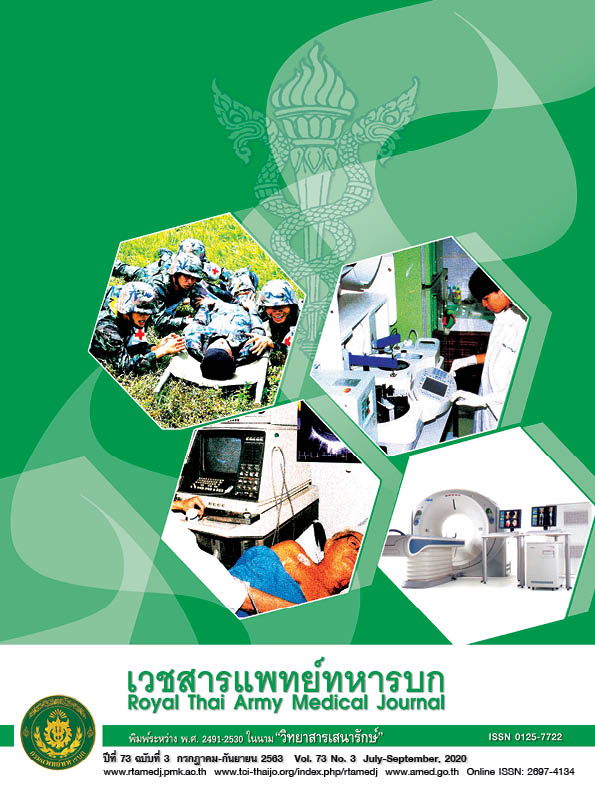ก้าวข้ามความรุนแรงสู่การใช้วินัยเชิงบวกในการแนะแนวทางเด็กและเยาวชน
Main Article Content
บทคัดย่อ
บทความวิชาการนี้มีเป้าหมายที่จะนำเสนอสถานการณ์ความรุนแรงและความสำคัญของการใช้วินัยเชิงบวกกับเด็กและเยาวชน โดยมุ่งหวังให้หน่วยงานที่เกี่ยวข้องเห็นความสำคัญในการใช้วินัยเชิงบวกทดแทนการลงโทษด้วยความรุนแรงเพื่อนำไปสู่การเปลี่ยนแปลงอย่างเป็นรูปธรรม ข้อมูลที่นำเสนอในบทความนี้ได้มาจากการทบทวนเอกสารงานวิจัย การวิเคราะห์จากองค์ความรู้ที่เกี่ยวข้องในกระบวนการวิจัย และข้อมูลเชิงประจักษ์จากการแลกเปลี่ยนประสบการณ์การทำงานของบุคลากรที่เกี่ยวข้องกับการดูแลเด็กและเยาวชน สถิติในประเทศไทยที่ได้จากการรายงานของผู้ถูกกระทำรุนแรง ที่มารับบริการที่ศูนย์พึ่งได้ตามโรงพยาบาล ในสังกัดกระทรวงสาธารณสุข ณ วันที่ 20 พ.ย.2558 พบว่ามีเด็กและเยาวชนถูกกระทำรุนแรงสูงถึง 10,712 คน หรือเฉลี่ยเท่ากับ 29 คนต่อวัน พบว่าในทัศนคติของผู้ใหญ่ส่วนหนึ่ง เห็นว่าการลงโทษเป็นสิ่งที่จำเป็นและเป็นการฝึกวินัย อย่างไรก็ตามข้อมูลจากการวิจัยพบว่าการลงโทษด้วยความรุนแรงมีผลดีเพียงแค่ช่วยยับยั้งพฤติกรรมไม่พึงประสงค์ของเด็กในระยะสั้นเท่านั้น แต่จะมีผลเสียตามมาหลายประการทั้งต่อร่างกาย จิตใจ พฤติกรรมและความคาดหวังของเด็ก อีกทั้งยังพบว่ามีผลกระทบต่อผู้ดูแลเด็กด้วย โดยเฉพาะด้านความรู้สึก แต่ผู้ดูแลไม่ทราบว่าจะพูดหรือกระทำแบบไหนจึงจะเป็นการฝึกวินัยและปรับเปลี่ยนพฤติกรรมที่ดีให้เกิดกับเด็กได้ การใช้มาตรการการฝึกวินัยเชิงบวกทดแทนการลงโทษด้วยความรุนแรงสามารถช่วยให้เด็กและเยาวชนเกิดการเรียนรู้ที่ดี ส่งผลทำให้เกิดพฤติกรรมที่พึงประสงค์ในระยะยาว เพราะมีความสัมพันธ์กับการควบคุมตนเองและการเรียนรู้อย่างมีนัยสำคัญทางสถิติ
Downloads
Article Details
บทความในวารสารนี้อยู่ภายใต้ลิขสิทธิ์ของ กรมแพทย์ทหารบก และเผยแพร่ภายใต้สัญญาอนุญาต Creative Commons Attribution-NonCommercial-NoDerivatives 4.0 International (CC BY-NC-ND 4.0)
ท่านสามารถอ่านและใช้งานเพื่อวัตถุประสงค์ทางการศึกษา และทางวิชาการ เช่น การสอน การวิจัย หรือการอ้างอิง โดยต้องให้เครดิตอย่างเหมาะสมแก่ผู้เขียนและวารสาร
ห้ามใช้หรือแก้ไขบทความโดยไม่ได้รับอนุญาต
ข้อความที่ปรากฏในบทความเป็นความคิดเห็นของผู้เขียนเท่านั้น
ผู้เขียนเป็นผู้รับผิดชอบต่อเนื้อหาและความถูกต้องของบทความของตนอย่างเต็มที่
การนำบทความไปเผยแพร่ซ้ำในรูปแบบสาธารณะอื่นใด ต้องได้รับอนุญาตจากวารสาร
เอกสารอ้างอิง
1. ฐาศุกร์ จันประเสริฐ. ความรุนแรงในโรงเรียน: เสียงสะท้อนจากเด็ก เยาวชนและผู้เกี่ยวข้อง. วารสารพฤติกรรมศาสตร์เพื่อการพัฒนา. 2554; 1:1-9. Thai.
2. ชไมพันธุ์ สันติกาญจน์, ศิริวรรณ สันติเจียรกุล, ศิริลักษณ์ จิตต์ระเบียบ. รายงานระดับชาติ เรื่องความรุนแรงและสุขภาพประเทศไทย [National report on violence and health Thailand]. กรุงเทพมหานคร: กรมควบคุมโรค กระทรวงสาธารณสุข; 2550. Thai.
3. Burnett M, Blain H, Cho C, Coomer R, Hubbard D. Corporal punishment: national and international perspectives. Windhoek: John Meinert Printing; 2010.
4. สมบัติ ตาปัญญา. รักวัวให้ผูกรักลูกให้ตี–ข้อสรุปจากงานวิจัย [อินเทอร์เน็ต]. กรุงเทพฯ: มูลนิธิศูนย์พิทักษ์สิทธิเด็ก; 2556 [สืบค้นเมื่อวันที่ 1 ต.ค. 2562]. จาก: https://www.thaichildrights.org/ articles/article-violence/% 95/. Thai.
5. Somayeh G, SayyedMirshah J, SayyedMostafa F, Azizollah A. Investigating the effect of positive discipline on the learning process and its achieving strategies with focusing on the students' abilities. International Journal of Academic Research in Business and Social Sciences 2013; 3: 305-14.
6. Human Rights Watch. A violent education: corporal punishment of children in US public schools. New York: American civil liberties union; 2008.
7. กลุ่มงานวิเคราะห์และพยากรณ์สถิติเชิงสังคม สำนักงานสถิติแห่งชาติ กระทรวงเทคโนโลยีสารสนเทศและการสื่อสาร. วิเคราะห์เด็กและเยาวชน. กรุงเทพฯ: บางกอกบล็อก; 2558. Thai.
8. สำนักงานส่งเสริมสวัสดิภาพและพิทักษ์เด็ก เยาวชน ผู้ด้อยโอกาสและผู้สูงอายุ กระทรวงการพัฒนาสังคมและความมั่นคงของมนุษย์. รายงานการศึกษาเกี่ยวกับความรุนแรงต่อเด็ก: เด็กในกลุ่มสถานพินิจและคุ้มครองเด็กและเยาวชนเล่มที่6. กรุงเทพมหานคร: กระทรวงการพัฒนาสังคมและความมั่นคงของมนุษย์; 2555. Thai.
9. สำนักงานคณะกรรมการกฤษฎีกา. พระราชบัญญัติศาลเยาวชนและครอบครัวและวิธีพิจารณาคดีเยาวชนและครอบครัว พ.ศ.2553. [อินเทอร์เน็ต]. กรุงเทพฯ: สำนักงานคณะกรรมการกฤษฎีกา; 2553 [สืบค้นเมื่อวันที่ 10 พ.ย. 2562]. จาก: http://www.oic.go.th/FILEWEB/CABINFOCENTER18/ DRAWER086/GENERAL/DATA0000/00000121.PDF Thai.
10. พระราชบัญญัติคุ้มครองเด็ก พ.ศ2546 [อินเทอร์เน็ต]. กรุงเทพฯ: สำนักพิมพ์คณะรัฐมนตรีและราชกิจจานุเบกษา; 2546 [สืบค้นเมื่อวันที่ 10 พ.ย. 2562]. จาก: https://dcy.go.th/webnew/upload/ regulation/regulation_th_20170105023516_1.pdf Thai.
11. UNICEF Thailand. A situation analysis of adolescents in Thailand 2015-2016 [Internet]. Bangkok: UNICEF Thailand; 2018 [ Updated 2018; cited 2018 May 1]. Available from:
https://www.unicef.org/thailand/media/1021/file/A%20Situation%20Analysis%20of%20Adolescents%20in%20Thailand%202015-2016.pdf
12. คณะกรรมการคุ้มครองเด็กแห่งชาติและองค์การยูนิเซฟประเทศไทย. คู่มือปฏิบัติและข้อตกลงร่วมกัน: การคุ้มครองและช่วยเหลือเด็กในภาวะเสี่ยงและเป็นเหยื่อจากการละเมิด ละเลยทอดทิ้ง แสวงหาผลประโยชน์และความรุนแรง พ.ศ.2551 [อินเทอร์เน็ต]. กรุงเทพฯ: กองคุ้มครองเด็กและเยาวชน; 2551 [สืบค้นเมื่อวันที่ 1ต.ค. 2562]. จาก: https://dcy.go.th/webnew/uploadchild/ old/download/file_th_20160606023820_1.pdf Thai.
13. องค์การยูนิเซฟประเทศไทย. รู้จักกับความรุนแรงต่อเด็ก [อินเทอร์เน็ต]. กรุงเทพฯ: องค์การยูนิเซฟประเทศไทย; 2562 [สืบค้นเมื่อวันที่ 1ต.ค. 2562]. จาก: http://endviolencethailand.org/ violence_against_children Thai.
14. ศูนย์สุขภาพจิตที่ 7 กรมสุขภาพจิต กระทรวงสาธารณสุข. รายงานวิจัยเรื่องสถานการณ์การลงโทษด้วยความรุนแรงและการสร้างวินัยเชิงบวกในสถานพินิจและคุ้มครองเด็กและเยาวชน และศูนย์ฝึกอบรมเด็กและเยาวชน ประเทศไทย: ความรู้ ทัศนคติ และพฤติกรรมการดูแลเด็กและเยาวชนที่เข้าสู่กระบวนการยุติธรรมของบุคลากรผู้ดูแล เสนอองค์กร UNICEF Thailand. อุบลราชธานี: ศูนย์สุขภาพจิตที่7 กรมสุขภาพจิต กระทรวงสาธารณสุข; 2557. Thai.
15. กรมกิจการสตรีและสถาบันครอบครัว กระทรวงการพัฒนาสังคมและความมั่นคงของมนุษย์. รายงานข้อมูลสถานการณ์ด้านความรุนแรงในครอบครัวสำหรับการรายงานตามมาตรา17 แห่งพระราชบัญญัติคุ้มครองผู้ถูกกระทำด้วยความรุนแรงในครอบครัว พ.ศ.2550 ประจำปี2558 [อินเทอร์เน็ต]. กรุงเทพฯ: กรมกิจการสตรีและสถาบันครอบครัว กระทรวงการพัฒนาสังคมและความมั่นคงของมนุษย์; 2558 [สืบค้นเมื่อวันที่ 1ต.ค. 2562]. จาก: https://library2.parliament.go.th/ giventake/content_ nla2557/d120859-06.pdf Thai.
16. UNICEF East Asia and Pacific Regional Office (EAPRO). Child maltreatment: Prevalence, incidence and consequences in the East Asia and Pacific Region: A systematic review of research, strengthening child protection system series No.1 [Internet]. Bangkok: UNICEF EAPRO; 2012 [ Updated 2012; cited 2018 Oct 3]. Available from: https://www.unicef.org/Child_Maltreatment.pdf
17. The Association of Southeast Asian Nations (ASEAN). The ASEAN guidelines for a non-violent approach to nurture, care and development of children, in all settings [Internet]. Jakarta: ASEAN; 2016 [Updated 2016 Oct; cited 2019 Oct 2]. Available from: https://asean.org/wp-content/uploads/2017/03/ASEAN-Guideline-for-Non-Violent-Approach_FINAL.pdf
18. จิรังกูร ณัฐรังสี, พรประไพ แขกเต้า, พรทิพย์ โพธิครูประเสริฐ. บทสรุปความรุนแรงสำหรับผู้บริหาร การศึกษาสถานการณ์ความรุนแรง กรณีศึกษาศูนย์ฝึกอบรมเด็กและเยาวชนจังหวัดสุราษฎร์ธานีและสถานพินิจและคุ้มครองเด็กและเยาวชนจังหวัดสุราษฎร์ธานี.2560.Thai.
19. สมบัติ ตาปัญญา.คู่มือครูการสร้างวินัยเชิงบวกในห้องเรียน. เชียงใหม่: คณะแพทยศาสตร์มหาวิทยาลัยเชียงใหม่; 2549. Thai.
20. ปิยวลี ธนเศรษฐกร, ปนัดดา ธนเศรษฐกร. 101 เคล็ดวิธีสร้างเด็กดี มีความสุข. กรุงเทพฯ: สำนักพิมพ์ฐานบุ๊คส์; 2553. Thai.
21. สถาบันวิจัยประชากรและสังคม มหาวิทยาลัยมหิดล. สุขภาพคนไทย2552: เพื่อสุขภาวะแห่งมวลมนุษย์ หยุดความรุนแรง ฉบับพิมพ์ครั้งที่1 31 มี.ค. 2553 [อินเทอร์เน็ต]. นครปฐม: สถาบันวิจัยประชากรและสังคม มหาวิทยาลัยมหิดล; 2553 [สืบค้นเมื่อวันที่ 2ก.ย.2562]. จาก: http://resource.thaihealth.or.th/library/academic/12130 Thai.


